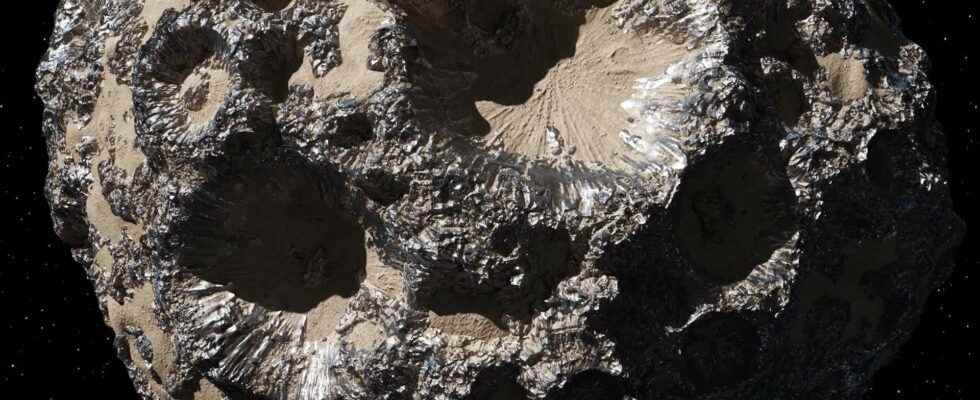While awaiting the launch of NASA’s Psyche probe, a team of planetary scientists have drawn up detailed maps of the physical properties of the asteroid’s surface, revealing a heterogeneous body, rich in rocks and metals, which has probably undergone significant collisions in the early stages of its history.
In September of this year, the mission is to be launched Psyche NASA, 14e mission of the Discovery program to fly over from 2026 the asteroid (16) Psycheorbiting within the main beltbetween the orbits of March and Jupiter, and which is suspected to be the ancient core of a protoplanet. The probe will then spend two years studying the surface of theasteroidlooking for clues about the evolution of planetary bodies in the Solar system. But a few eager scientists decided to move the mission forward, seeking to map (16) Psyche from ground-based observations alone, giving us a first glimpse of what the probe will see when it arrives near the Earth. asteroid.
The Alma radio telescope to observe (16) Psyche
Representing alone 1% of the mass of the main belt, (16) Psyche is one of the M-type asteroids which, rich in metal, are generally considered to represent an ancient core, a remnant of a protoplanet. Discovered in 1852 by theastronomer Annibale de Gasparis, the asteroid has since been the subject of numerous observations: its surface composition is particularly well known thanks to observations infrared made by different telescopes around the globe, but these observations were not precise enough to spatially resolve compositional variations on the asteroid’s surface. A team of planetary scientists, led by MIT scientists (Massachusetts Institute of Technology), decided to exploit the observations of the Alma telescope (Atacama Large Millimeter/Submillimeter Array), located in Chile, in order to access more precise data. Composed of 66 antennas observing in wavelengths millimeters, sensitive to certain thermal and electrical properties of a surface, Alma allowed the team to observe Psyche with a resolution of just over 30 kilometers per pixel. These data have enabled scientists to draw up a first card thermal emission from the asteroid, and to produce the newest 3d model of the morphology of (16) Psyche.
Clues to the evolution of planetary bodies?
In their new study, the scientists ran several simulations of (16) Psyche, to see which surface properties would best explain the thermal emission measurements. The team thus suggests being able to reveal the “most probable” map of the surface materials of the asteroid.
Their study thus shows that the surface of (16) Psyche is very heterogeneous, covered with a great diversity of materials. It confirms the richness of its metal surface, but the abundance of metal and silicates seems to vary around the asteroid: according to scientists, this would be an argument in favor of the existence of a coat silicate in the first phases of the existence of the protoplanet, which would have since disappeared.
Another astonishing characteristic: the scientists noticed that during the rotation of the asteroid, materials located in the bottom of a crater changed temperature much faster than the surrounding materials. According to them, this would suggest the presence of small areas of fine grains which, like the sand on Earth, would heat up faster than the surrounding rocky material. This hypothesis intrigues scientists, because this type of deposit has so far never been observed on such a massive asteroid.
Thus, these new data seem to confirm the scientific community in the idea that (16) Psyche would be the old core of a protoplanet which would have seen its mantle torn off, with some vestiges still visible in the rocky areas of the asteroid. However, although the study shows strong variations in composition around the surface of (16) Psyche, the probe to be launched by NASA, equipped with a spectrometer gamma ray, should bring us much more information on the composition of the surface of the asteroid.
Interested in what you just read?
